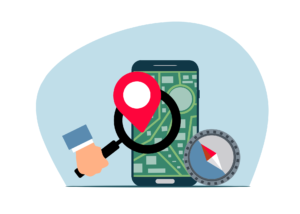In our fast-paced, data-driven world, the ability to track and manage locations efficiently is a game-changer for businesses and individuals alike. Whether you're a delivery service looking to optimize routes, a parent concerned about your child's safety, or a traveler wanting to create a digital map of your adventures, location tracking is a powerful tool. And what better way to harness this power than through automation? Enter Python, the versatile programming language that can streamline your location tracking processes like never before.
In this blog post, we'll embark on an exciting journey to explore how Python can automate location tracking, making your life easier and more data-savvy. So, without further ado, let's get started.
Utilize Real-time Location Updates
Real-time location updates are crucial for tracking vehicles, assets, or people as they move. Python provides an efficient means of achieving this by continuously monitoring GPS sensors and pushing location data to cloud-based servers or applications. Using Python libraries like geopy for geolocation calculations and MQTT or WebSocket communication for real-time data transmission, you can ensure that location information remains up-to-date.
This capability is invaluable for most RTLS such as Passive RFID, Wifi Positioning, Active RFID, Infrared (IR), BLE (Bluetooth Low Energy), and UWB (Ultra-wideband), which are involved in live asset tracking, emergency services, and location-based analytics. Real-time updates enable businesses and organizations to make informed decisions, enhance safety protocols, and provide timely services to their users or customers.
Use GPS Sensors
GPS sensors play a pivotal role in automating location tracking processes with Python. These sensors, often integrated with microcontrollers like Raspberry Pi or Arduino, capture precise geographic coordinates, making them ideal for applications like vehicle tracking, wildlife monitoring, and outdoor navigation.
Python libraries like gpsd or Adafruit_GPS simplify the interaction with GPS sensors, allowing developers to extract real-time location data effortlessly. Whether you're mapping remote areas, optimizing logistics, or ensuring the safety of assets in transit, leveraging GPS sensors in conjunction with Python empowers you to gather accurate and reliable location information, ultimately enhancing decision-making and operational efficiency.
Integrate Geocoding API
Geocoding API integration is a fundamental component of automating location tracking processes with Python. It enables the conversion of addresses, place names, or landmarks into precise geographic coordinates, simplifying location-based tasks. Popular APIs like Google Maps Geocoding and OpenCage Geocoding offer comprehensive data for these conversions.
By harnessing Python's requests library to interact with these APIs, developers can seamlessly retrieve location information and incorporate it into their applications or databases. This integration is invaluable for geospatial analysis, location-based search, and mapping services, allowing businesses and developers to efficiently manage and utilize location data to enhance user experiences and operational insights.
Log GPS Data
GPS data logging is a vital aspect of location tracking automation with Python. It involves the continuous recording of GPS coordinates at specified intervals, creating a valuable dataset for analysis and historical reference. Python facilitates this process by enabling the development of scripts that collect and store location data in various formats, such as databases or CSV files.
Libraries like pandas can be employed for efficient data management and analysis. GPS data logging is pivotal in applications ranging from route optimization and asset tracking to environmental monitoring and scientific research, as it provides a historical record of location information essential for decision-making and trend analysis.
Implement Geofencing Alerts
Implementing geofencing alerts in Python is a strategic approach to automate location-based notifications and enhance spatial monitoring. Geofencing involves defining virtual boundaries or geographic areas, and when a tracked object enters or exits these predefined zones, alerts are triggered. Python, with its rich ecosystem of geospatial libraries and tools, provides the ideal environment for developing geofencing systems.
By utilizing libraries like geopy to calculate distances and establish proximity to the defined boundaries, Python applications can send alerts through various channels such as emails, SMS, or push notifications. This technology is valuable for asset security, location-based marketing, and ensuring compliance with location-specific regulations, making it an essential tool for businesses and organizations.
Integrate Mobile App
Mobile app integration with Python serves as a versatile means of incorporating location tracking capabilities into applications. Utilizing frameworks like Flask or Django, developers can create mobile apps that seamlessly interact with the device's GPS sensor, providing location data through API endpoints. This integration allows for diverse applications, from fitness and navigation apps to on-demand services and social networking platforms, where real-time location information enhances user experiences.
Additionally, push notifications delivered through the app can be employed to alert users or administrators to location-related events, fostering engagement and safety. Mobile app integration empowers businesses to deliver location-aware services, boosting customer engagement and satisfaction.
Python offers a versatile toolkit for automating location tracking processes, enabling organizations and developers to harness the power of geographic data. Whether through GPS sensor utilization, geocoding API integration, real-time updates, GPS data logging, geofencing alerts, or mobile app integration, Python facilitates precise and efficient location tracking across various domains. These automation techniques empower businesses to enhance operational efficiency, improve safety measures, and deliver location-based services to users. As location data continues to play a pivotal role in decision-making and user experiences, Python's capabilities in this realm remain invaluable for innovators seeking to unlock the potential of location-aware applications.

